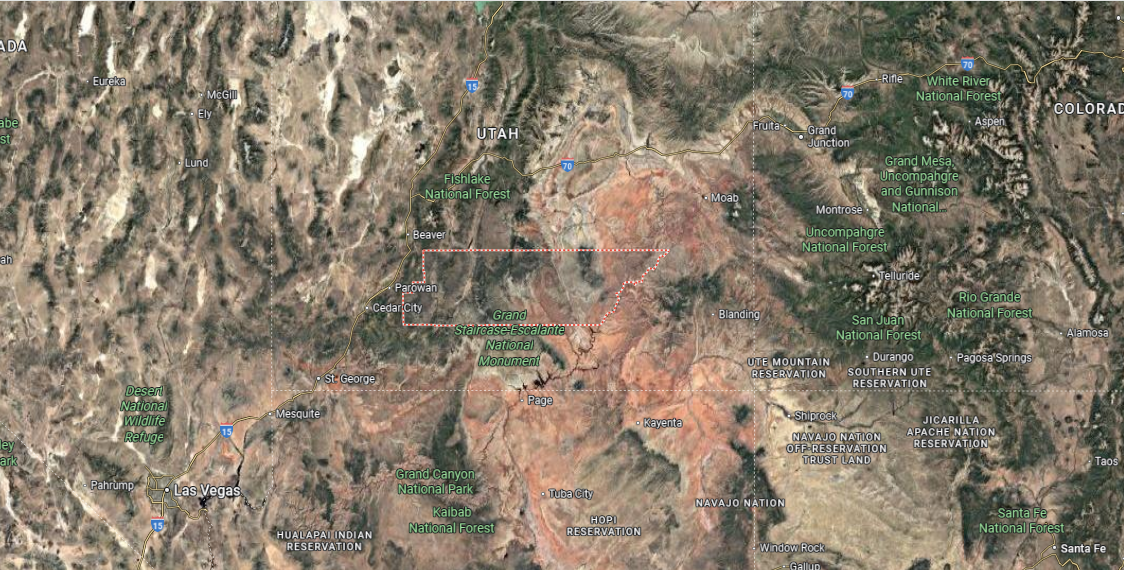
Best counties to live in Utah
More counties in the United States experienced population growth in the last year, according to the latest Census data, even as pandemic-related moving trends begin to normalize.
Counties in the South continued to experience growth, particularly in Florida, where 96% of its 67 counties gained new residents. Polk County, Florida, a suburb of Orlando, added the most, with 26,000 people moving there in 2023.
Meanwhile, counties in the Midwest and Northeast continued to lose population, but at slower rates than the year before. Some of the biggest losses were in counties home to large cities, including Cook County, Illinois (home of Chicago) and the boroughs of Brooklyn and Queens in New York.
Many counties are experiencing growth due to their job opportunities, education, or relatively affordable housing costs. Others are favored for their historic or well-designed downtowns or access to cultural opportunities.
Stacker compiled a list of the best counties to live in Utah using rankings from Niche. Niche ranks counties by various factors including public schools, educational attainment, cost of living, and housing.
Keep reading to see if your county made the list.
You may also like: Seniors in these Utah counties have the highest Alzheimer’s rates

#20. Sanpete County, Utah
– Overall Rank: Not ranked
– Population: 28,816
– Median household income: $64,356
– Median home value: $268,600 (78% own)
– Median rent: $910 (22% rent)
– Top public schools: Ephraim School (grade B+), North Sanpete Middle School (grade B), Manti High School (grade B)
– Top private schools: Wasatch Academy (grade A+)
– Top places: Ephraim (grade B), Mount Pleasant (grade B minus), Manti (grade B minus)

About
Sanpete County sits in central Utah, surrounded by mountain ranges and wide valleys that shape both its landscape and way of life. Founded by early pioneers, it holds a legacy of agriculture, craftsmanship, and cultural traditions that continue to ground its communities. Towns within the county reflect a rhythm of living tied closely to the land and to generational heritage.
Festivals, local fairs, and historic sites add a sense of continuity, drawing people together in shared pride and memory. Outdoor opportunities in nearby canyons and forests further connect residents to their surroundings. Sanpete County endures as a place where history, land, and community weave together into a steady and enduring character.
Where is Sanpete County?
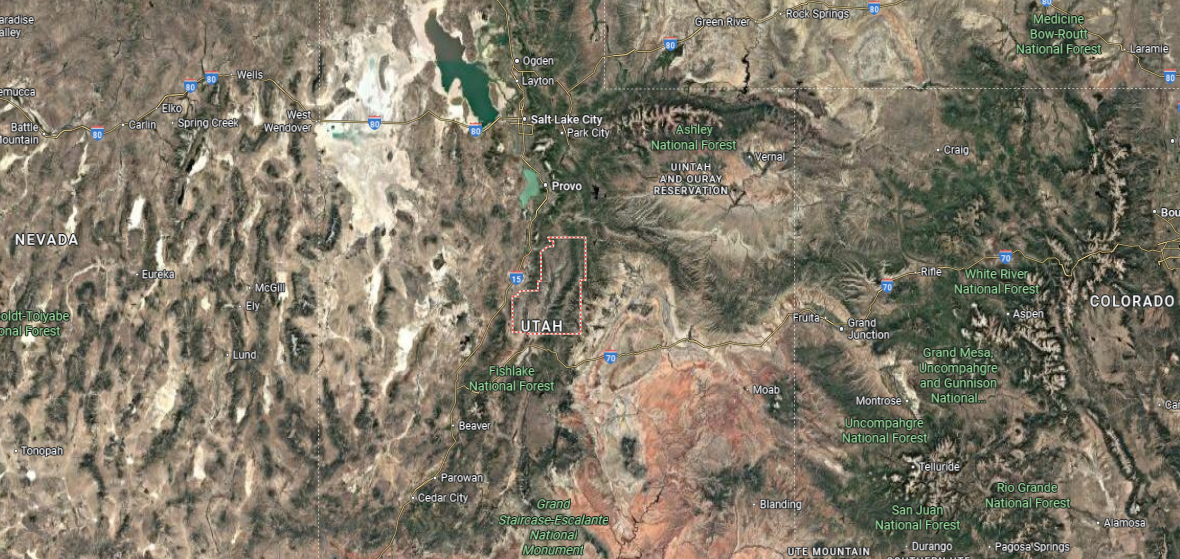
Sanpete County lies in central Utah, bordered by Utah County to the north and Sevier County to the south. It stretches about 75 miles from north to south, with the Wasatch Plateau rising along its eastern edge and the San Pitch Mountains framing the west. The county seat, Manti, sits near the center of the valley floor along U.S. Route 89.
Other communities include Ephraim, home to Snow College, and Mount Pleasant further north in the valley. Sanpete County is located about 110 miles south of Salt Lake City, making it accessible yet distinctly rural. Its geography blends high mountain plateaus, fertile farmland, and small towns that line the central Sanpete Valley.
#19. Emery County, Utah
– Overall Rank: Not ranked
– Population: 9,898
– Median household income: $67,056
– Median home value: $168,700 (78% own)
– Median rent: $662 (22% rent)
– Top public schools: Cottonwood School (grade B), Ferron School (grade B minus), Castle Dale School (grade B minus)
– Top private schools: Second Chances In Southern Utah (grade unavailable)
– Top places: Castle Dale (grade B minus), Orangeville (grade B minus), Elmo (grade B minus)

About
Emery County rests between Utah’s mountains and desert canyons, a landscape that has long defined its identity. Early coal mining and farming shaped the growth of its small towns, leaving behind traditions of hard work and resilience. Today, the county balances its industrial past with a strong connection to the surrounding land.
The San Rafael Swell and Green River carve out striking scenery that supports recreation and exploration. Community life is marked by school events, local gatherings, and ties that extend across generations. Emery County stands as a place where rugged landscapes and enduring traditions meet in everyday life.
Where is Emery County?
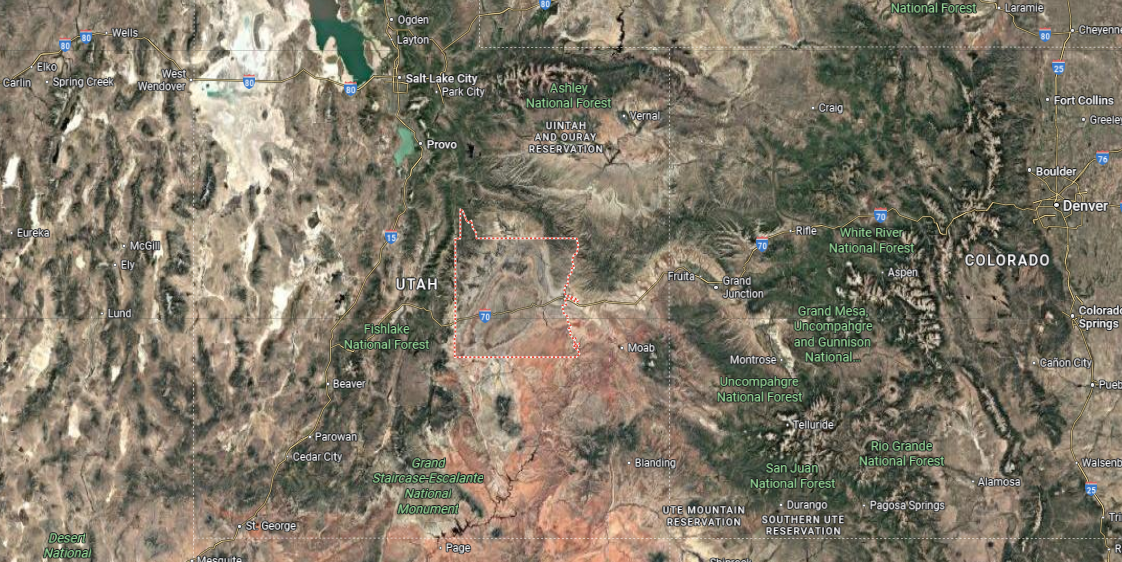
Emery County lies in east-central Utah, bordered by Carbon County to the north and Grand County to the east. It covers over 4,400 square miles, ranging from the Wasatch Plateau in the west to the San Rafael Swell’s red-rock canyons in the east. The county seat, Castle Dale, is positioned near the center along Cottonwood Creek.
Communities include Huntington to the north and Green River on the eastern edge near the Grand County line. The county is about 125 miles southeast of Salt Lake City and is crossed by Interstate 70. Its landscape combines rugged plateaus, desert formations, and coal fields that define both its scenery and history.
#18. Box Elder County, Utah
– Overall Rank: Not ranked
– Population: 58,291
– Median household income: $72,769
– Median home value: $308,900 (76% own)
– Median rent: $927 (24% rent)
– Top public schools: Garland School (grade B+), Box Elder High School (grade B), Box Elder Middle School (grade B)
– Top private schools: Triumph Academy (grade unavailable), Utah State University Brigham City Child Development Laboratory (grade unavailable)
– Top places: Willard (grade B), Brigham City (grade B), Perry (grade B)

About
Box Elder County stretches across northern Utah with landscapes ranging from mountain foothills to the edge of the Great Salt Lake. Its history includes early pioneer settlements, railroads, and farming traditions that continue to shape its communities today. The county reflects a blend of wide-open spaces and towns rooted in resilience and local pride.
Migratory bird refuges, historic rail landmarks, and seasonal festivals highlight its cultural and natural richness. Residents enjoy both agricultural rhythms and outdoor recreation that connect them to the land. Box Elder County remains a region where history, community, and open landscapes create a distinctive way of life.
Where is Box Elder County?
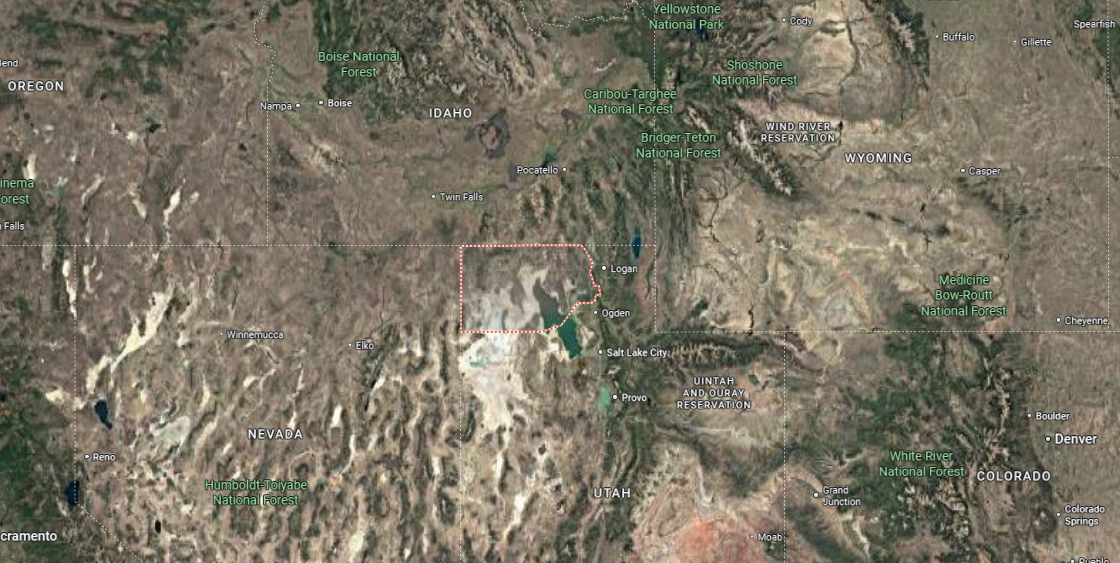
Box Elder County is in the northwestern corner of Utah, sharing its northern boundary with Idaho and its western edge with Nevada. It spans more than 5,700 square miles, making it one of the largest counties in the state. The county seat, Brigham City, lies near the Wasatch Front at the base of the Wellsville Mountains.
Other communities include Tremonton to the north and Garland close to the Idaho border. Box Elder County is located about 60 miles north of Salt Lake City and provides access to both the Great Salt Lake and the Golden Spike National Historical Park. Its terrain features fertile valleys, mountain ranges, and vast desert stretches, reflecting the county’s mix of agriculture, history, and open land.
#17. Iron County, Utah
– Overall Rank: Not ranked
– Population: 58,068
– Median household income: $63,005
– Median home value: $299,400 (68% own)
– Median rent: $935 (32% rent)
– Top public schools: SUU SUCCESS Academy (grade A), Iron Springs School (grade B), Escalante Valley School (grade B)
– Top private schools: Life Quest Girls Academy (grade unavailable), Moonridge Academy (grade unavailable)
– Top places: Cedar City (grade B), Enoch (grade B minus), Parowan (grade C minus)

About
Iron County in southwestern Utah carries a name tied to the early ironworks that helped establish its communities. The county’s past is marked by pioneer industry, ranching, and education, with Cedar City growing into a cultural and economic center. Its setting, framed by plateaus and mountains, shapes both daily life and regional character.
The area is known for theater festivals, university life, and easy access to nearby national parks. Smaller towns add rural traditions and a slower pace that balance Cedar City’s activity. Iron County stands as a crossroads of history, culture, and landscape in Utah’s southern region.
Where is Iron County?
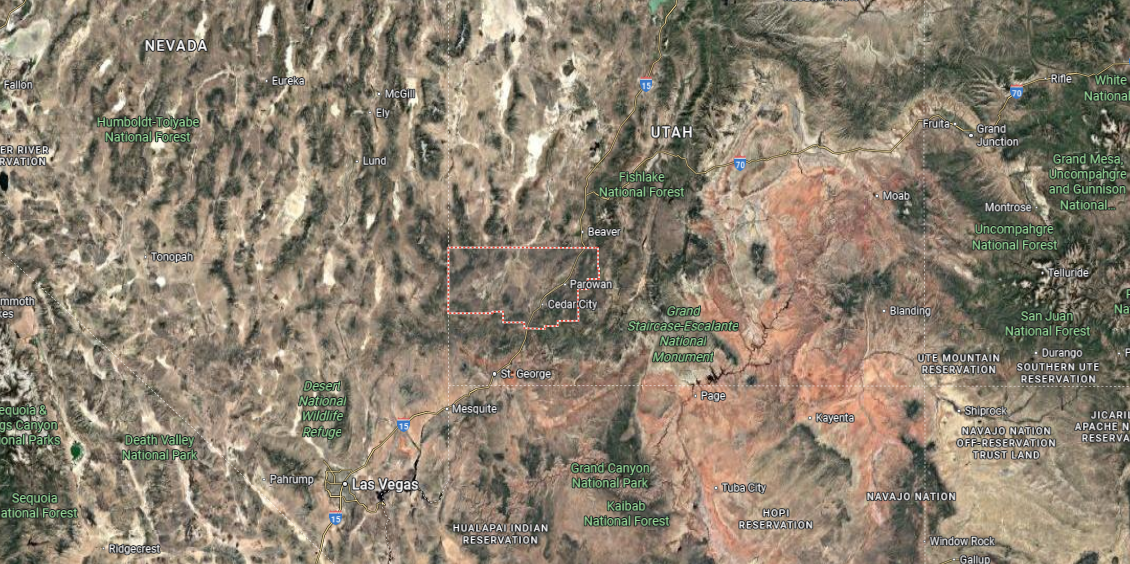
Iron County is located in southwestern Utah, bordered by Beaver County to the north and Washington County to the south. It stretches across nearly 3,300 square miles, with the Markagunt Plateau rising in the east and desert valleys extending westward. The county seat, Parowan, rests near the base of the mountains along Interstate 15.
Cedar City, the largest community, lies about 20 miles south of Parowan and serves as a cultural and economic hub. Iron County sits roughly 250 miles south of Salt Lake City and 170 miles northeast of Las Vegas. Its landscape is defined by red-rock canyons, forested plateaus, and historic iron mining areas that gave the county its name.
#16. Grand County, Utah
– Overall Rank: Not ranked
– Population: 9,680
– Median household income: $59,171
– Median home value: $426,800 (67% own)
– Median rent: $1,020 (33% rent)
– Top public schools: Grand County High School (grade B minus), Helen M. Knight School (grade C), Grand County Middle School (grade C)
– Top private schools: Castle Valley Academy (grade unavailable)
– Top places: Moab (grade B minus), Castle Valley (grade C minus)
You may also like: The top patent earner in Utah last year

About
Grand County lies in eastern Utah, where red rock canyons and desert plateaus create some of the most recognizable scenery in the state. Its communities grew alongside mining, ranching, and river travel, later transforming into hubs for tourism and outdoor exploration. Moab, the county seat, anchors this identity with its role as both a gateway and gathering place.
Arches and Canyonlands National Parks bring visitors from around the world, while locals maintain strong ties to land and tradition. Festivals, markets, and recreation weave together community life with the natural backdrop. Grand County thrives as a place where dramatic landscapes and human presence form a lasting connection.
Where is Grand County?
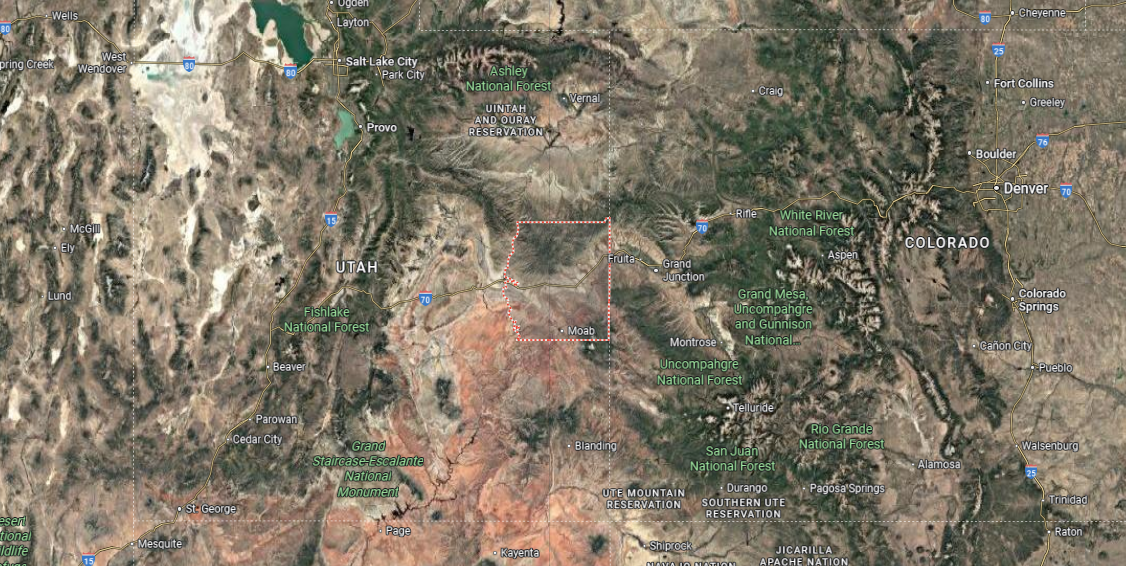
Grand County is set in eastern Utah, bordered by Uintah County to the north and San Juan County to the south. Covering just over 3,600 square miles, it stretches from the Colorado River corridor through desert mesas to the La Sal Mountains. The county seat, Moab, sits along the Colorado River and serves as a gateway to nearby national parks.
Other small communities include Castle Valley to the northeast and Thompson Springs along Interstate 70. Grand County lies about 230 miles southeast of Salt Lake City and is accessible by U.S. Route 191 and I-70. Its geography is dominated by red-rock formations, deep canyons, and public lands that attract visitors from around the world.
#15. Sevier County, Utah
– Overall Rank: Not ranked
– Population: 21,667
– Median household income: $66,972
– Median home value: $239,400 (80% own)
– Median rent: $791 (20% rent)
– Top public schools: Pahvant School (grade B+), North Sevier High School (grade B), Richfield High School (grade B)
– Top private schools: Sorenson’s Ranch School (grade unavailable), High Top Ranch School (grade unavailable), Storm Ridge Ranch School (grade unavailable)
– Top places: Richfield (grade B+), Glenwood (grade B+), Aurora (grade B)

About
Sevier County rests in central Utah, where mountain ranges and fertile valleys give shape to both landscape and livelihood. Farming and ranching have long defined the county’s economy, with small towns preserving a steady rhythm rooted in tradition. Richfield serves as its hub, blending regional services with a sense of local community.
Outdoor life connects residents and visitors alike through trails, fishing waters, and surrounding forests. Annual fairs and cultural gatherings highlight both heritage and civic pride. Sevier County endures as a region where natural setting and community spirit remain closely tied.
Where is Sevier County?
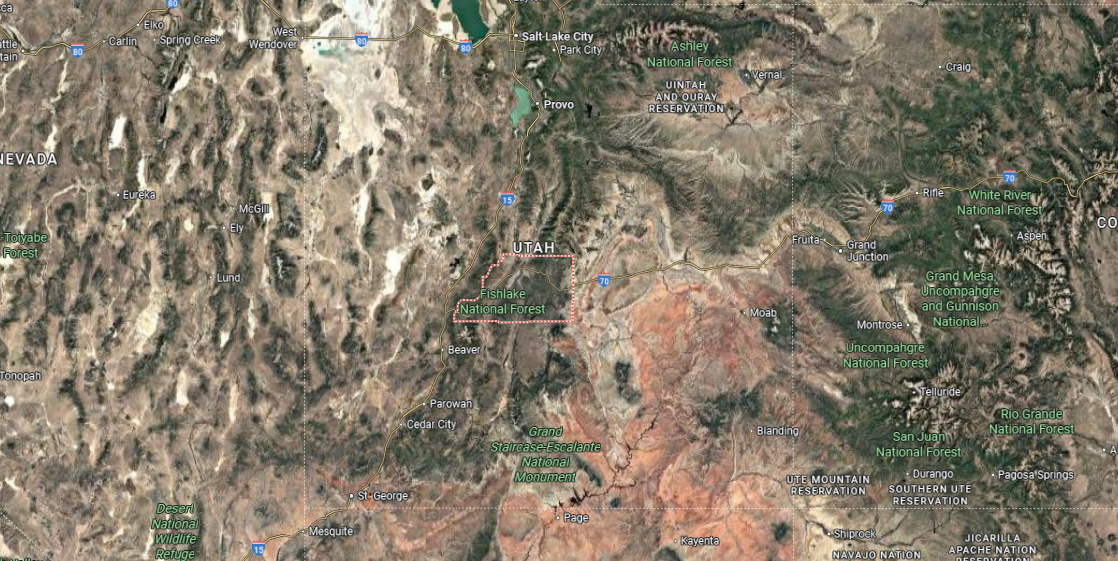
Sevier County lies in central Utah, bordered by Sanpete County to the north and Piute County to the south. It spans about 1,900 square miles, with the Sevier River running through its valleys and the Pahvant and Sevier Plateaus framing its sides. Richfield, the county seat, is located along Interstate 70 and serves as a regional hub.
Other communities include Salina at the northern end of the valley and Monroe near the base of the Sevier Plateau. The county is about 160 miles south of Salt Lake City, making it a central point between northern and southern Utah. Its landscape mixes farmland, mountain plateaus, and canyon areas, with outdoor recreation and agriculture shaping local life.
#14. San Juan County, Utah
– Overall Rank: Not ranked
– Population: 14,524
– Median household income: $52,108
– Median home value: $177,900 (80% own)
– Median rent: $861 (20% rent)
– Top public schools: Monticello High School (grade B+), Monticello School (grade B), San Juan High School (grade B minus)
– Top private schools:
– Top places: Blanding (grade B+), Monticello (grade B minus), Montezuma Creek (grade C minus)

About
San Juan County spans Utah’s southeastern corner, its vast expanse defined by mesas, canyons, and desert plateaus. Home to a rich Indigenous heritage, the region reflects centuries of Navajo, Ute, and Puebloan presence that remain central to its identity. Small towns are scattered across the landscape, each carrying traditions tied to both history and place.
Monument Valley, Bears Ears, and Canyonlands mark the county with world-renowned scenery that draws visitors while anchoring local pride. Community life is shaped by cultural events, crafts, and enduring ties to the land. San Juan County stands as a region where heritage and landscape merge into a profound and lasting character.
Where is San Juan County?
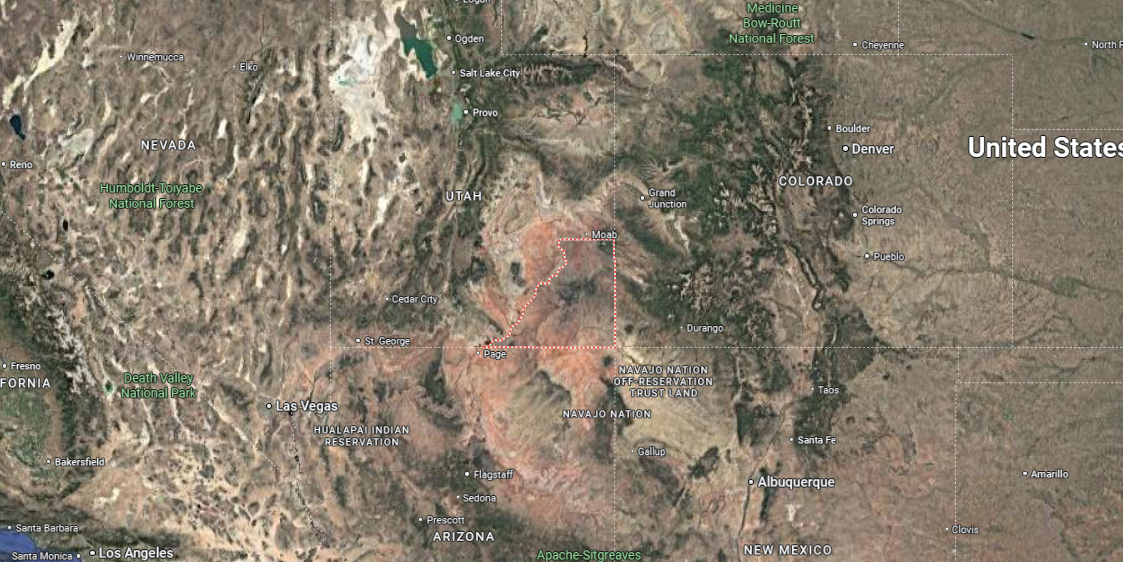
San Juan County is in the southeastern corner of Utah, touching Colorado to the east, New Mexico to the southeast, and Arizona to the south. It is the state’s largest county, covering more than 7,800 square miles of deserts, mesas, and mountain ranges. The county seat, Monticello, sits along U.S. Route 191 at the foot of the Abajo Mountains.
Communities include Blanding farther south and Mexican Hat near the San Juan River. The county is about 300 miles southeast of Salt Lake City, with U.S. Highways 191 and 163 crossing its terrain. Its landmarks include Bears Ears, Monument Valley, and parts of Canyonlands National Park, reflecting both cultural and natural significance.
#13. Morgan County, Utah
– Overall Rank: Not ranked
– Population: 12,367
– Median household income: $120,854
– Median home value: $556,900 (87% own)
– Median rent: $1,276 (13% rent)
– Top public schools: Mountain Green School (grade A minus), Mountain Green Middle School (grade B+), Morgan Elementary School (grade B)
– Top private schools:
– Top places: Morgan (grade B), Mountain Green (grade B), Enterprise (grade C+)

About
Morgan County sits in a mountain valley of northern Utah, where rolling hills and river corridors frame both farmland and small-town life. Its early settlement was tied to ranching, agriculture, and trade routes, shaping a community built on resourcefulness and connection to the land. Today, the county maintains its rural character while adapting to modern growth.
Residents gather through school events, fairs, and outdoor traditions that keep civic life closely knit. Trails, rivers, and nearby canyons provide spaces for recreation that link daily living to the surrounding landscape. Morgan County remains a place where rural heritage and natural setting continue to guide its identity.
Where is Morgan County?
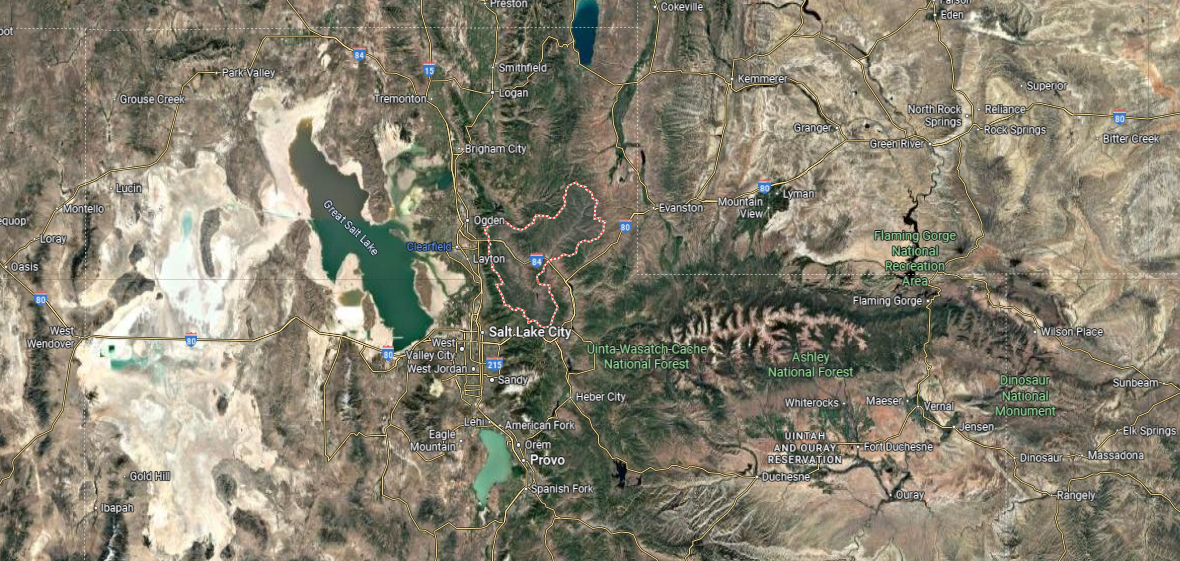
Morgan County is located in northern Utah, bordered by Weber County to the west and Summit County to the east. It covers just over 600 square miles, with the Wasatch Mountains framing much of its landscape. The county seat, Morgan, lies along the Weber River and Interstate 84.
Other communities include Mountain Green near the western edge and Croydon to the northeast. Morgan County sits about 40 miles northeast of Salt Lake City, offering close access to both mountain canyons and urban centers. Its geography blends river valleys, rugged peaks, and farmland that define its rural character.
#12. Garfield County, Utah
– Overall Rank: Not ranked
– Population: 5,121
– Median household income: $56,481
– Median home value: $237,800 (73% own)
– Median rent: $779 (27% rent)
– Top public schools: Panguitch Elementary School (grade B minus), Panguitch Middle School (grade B minus), Escalante Elementary School (grade B minus)
– Top private schools: Turn-About Ranch (grade unavailable)
– Top places: Bryce Canyon City (grade B), Boulder (grade B), Panguitch (grade B minus)

About
#11. Millard County, Utah
– Overall Rank: Not ranked
– Population: 13,027
– Median household income: $69,403
– Median home value: $227,000 (76% own)
– Median rent: $801 (24% rent)
– Top public schools: Delta North School (grade B), Delta Middle School (grade B), Millard High School (grade B)
– Top private schools: White River Academy (grade unavailable)
– Top places: Delta (grade B minus), Fillmore (grade B), Hinckley (grade B)
You may also like: Best private colleges in Utah

About
Millard County lies in western Utah, where open desert basins meet mountain ranges that frame its wide horizons. Early settlements grew around farming, ranching, and trade routes, leaving behind towns that still carry a steady rural rhythm. The county reflects both its pioneer past and the quiet resilience of communities shaped by the land.
Local fairs, heritage festivals, and school-centered activities sustain strong community ties. Nearby recreation areas and historic sites connect residents and visitors to the county’s landscape and story. Millard County stands as a place where open space, history, and daily life remain deeply interwoven.
Where is Millard County?
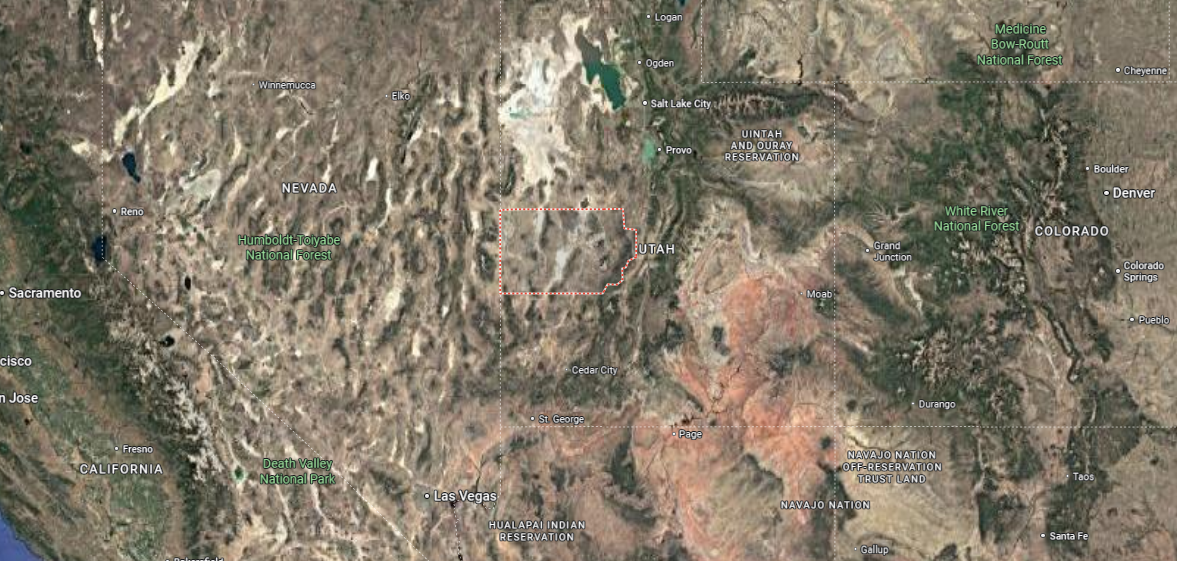
Millard County is located in western Utah, bordered by Juab County to the north and Beaver County to the south. It covers more than 6,600 square miles, reaching from the Pahvant Range in the east to the desert basins near the Nevada line in the west. The county seat, Fillmore, was once the territorial capital and sits along Interstate 15.
Other communities include Delta in the Sevier Desert and Hinckley nearby to the west. Millard County lies about 140 miles southwest of Salt Lake City, offering both historic and natural landmarks. Its terrain includes mountain ranges, lava flows, dry lakebeds, and farmland spread across its wide valleys.
#10. Washington County, Utah
– Overall Rank: 1,253
– Population: 183,297
– Median household income: $71,976
– Median home value: $417,400 (72% own)
– Median rent: $1,321 (28% rent)
– Top public schools: George Washington Academy (grade A), UT SUCCESS Academy (grade A), Crimson Cliffs Middle School (grade A)
– Top private schools: Liahona Academy (grade B minus), Cinnamon Hills Youth Crisis Center (grade unavailable), Coral Sands Academy (grade unavailable)
– Top places: Washington (grade B+), Santa Clara (grade B), St. George (grade B)

About
Washington County in Utah’s southwest stands at the meeting point of desert, red rock, and mountain landscapes. Its history begins with early pioneer settlements and irrigation efforts that turned arid land into thriving communities. St. George, the county seat, has grown into a regional hub blending historic roots with rapid modern development.
The county is known for its proximity to Zion National Park, golf courses, and year-round outdoor opportunities. Smaller towns contribute agricultural traditions and a slower pace that balance the growth of urban areas. Washington County reflects both the energy of change and the grounding presence of heritage and landscape.
Where is Washington County?
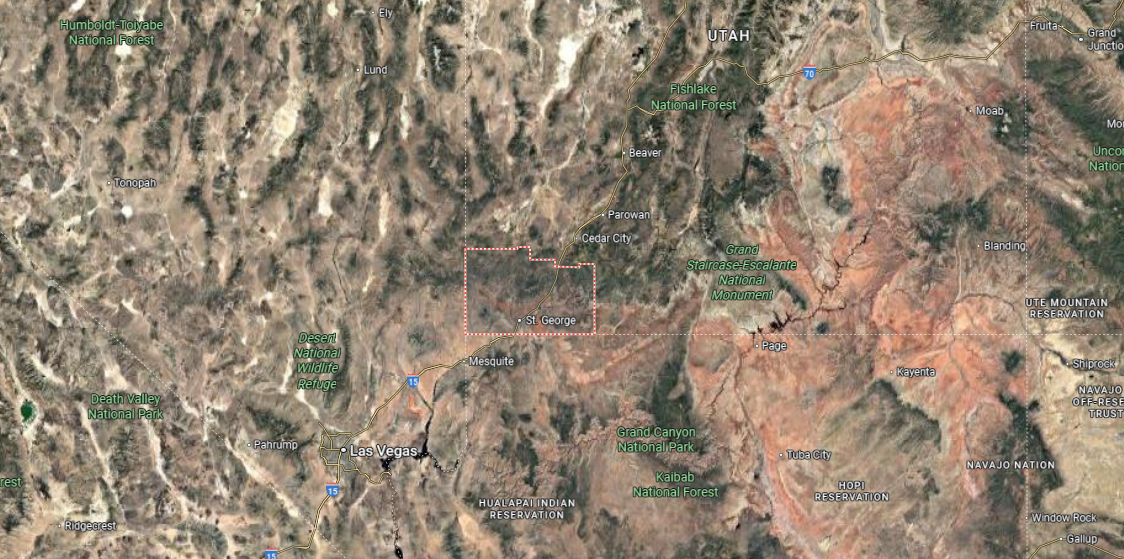
Washington County sits in Utah’s southwestern corner, bordered by Arizona to the south and Nevada to the west. Covering about 2,400 square miles, it includes the Virgin River valley and the Pine Valley Mountains to the north. The county seat, St. George, lies along Interstate 15 and anchors the region.
Other communities include Hurricane to the east, Santa Clara to the west, and Springdale near Zion National Park. The county is about 300 miles south of Salt Lake City and 120 miles northeast of Las Vegas. Its terrain features red-rock canyons, desert plateaus, and forested mountains, creating a varied landscape.
#9. Beaver County, Utah
– Overall Rank: 1,173
– Population: 7,102
– Median household income: $80,268
– Median home value: $248,200 (80% own)
– Median rent: $948 (20% rent)
– Top public schools: Minersville School (grade A minus), Belknap School (grade A minus), Minersville School (grade B+)
– Top private schools:
– Top places: Beaver (grade B), Milford (grade B), Minersville (grade C)

About
Beaver County rests in southwestern Utah, its setting shaped by mountains, valleys, and streams that long supported farming and ranching. The county’s name reflects the waterways once filled with beaver, symbols of the natural resources that sustained early settlement. Mining and agriculture remain part of its heritage, grounding the identity of its small communities.
Locals gather through fairs, rodeos, and school events that keep traditions strong across generations. Outdoor recreation in nearby forests and mountain ranges adds another layer of connection to place. Beaver County continues as a region where natural landscape and rural life remain firmly tied together.
Where is Beaver County?
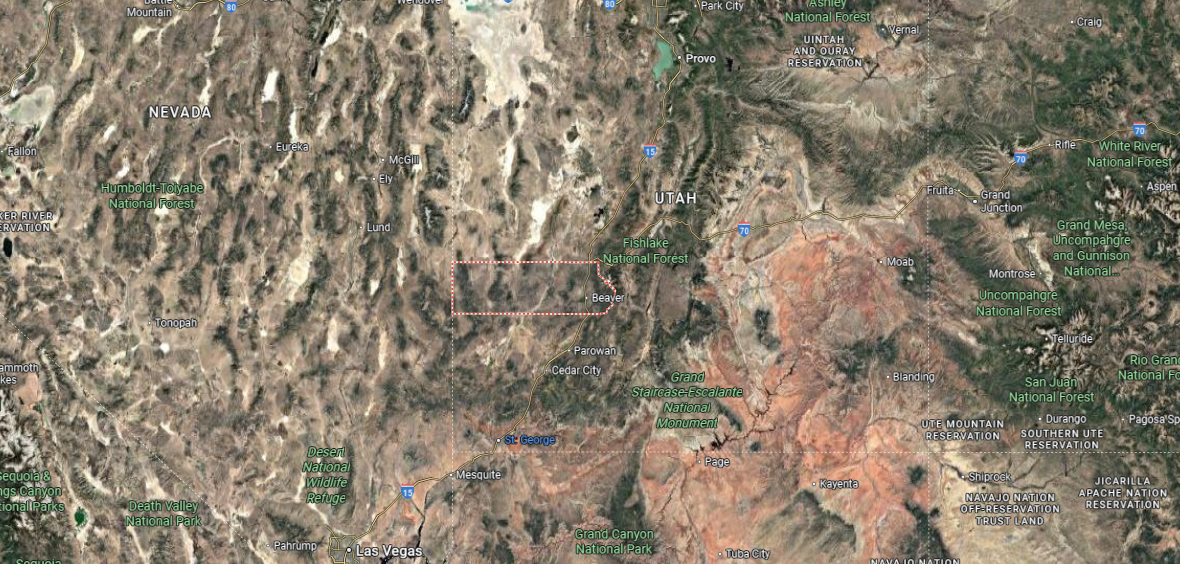
Beaver County is located in southwestern Utah, bordered by Millard County to the north and Iron County to the south. It covers about 2,600 square miles, stretching from the Mineral Mountains in the west to the Tushar Mountains in the east. The county seat, Beaver, lies along Interstate 15 at the base of the Tushar range.
Other towns include Milford in the west desert region and Minersville to the northwest. Beaver County is about 200 miles south of Salt Lake City and 220 miles north of Las Vegas, making it a crossroads between major regions. Its geography combines high mountain peaks, wide valleys, and mineral-rich lands tied to the county’s history.
#8. Kane County, Utah
– Overall Rank: 1,125
– Population: 7,814
– Median household income: $70,327
– Median home value: $297,500 (78% own)
– Median rent: $1,124 (22% rent)
– Top public schools: Kanab Middle School (grade B+), Kanab Elementary School (grade B+), Kanab High School (grade B+)
– Top private schools:
– Top places: Kanab (grade B+), Big Water (grade A minus), Orderville (grade B)

About
Kane County stretches along Utah’s southern border, a region defined by sandstone cliffs, winding canyons, and high desert plateaus. Its communities trace roots to pioneer settlements and ranching traditions, yet today they serve as gateways to some of the Southwest’s most remarkable landscapes. Kanab, the county seat, anchors this identity as both a historic town and a hub for exploration.
The area’s proximity to national parks, monuments, and scenic byways shapes both daily rhythms and seasonal life. Festivals, film history, and local gatherings bring residents together while celebrating the county’s unique character. Kane County stands as a place where rugged scenery and community spirit intertwine in lasting ways.
Where is Kane County?
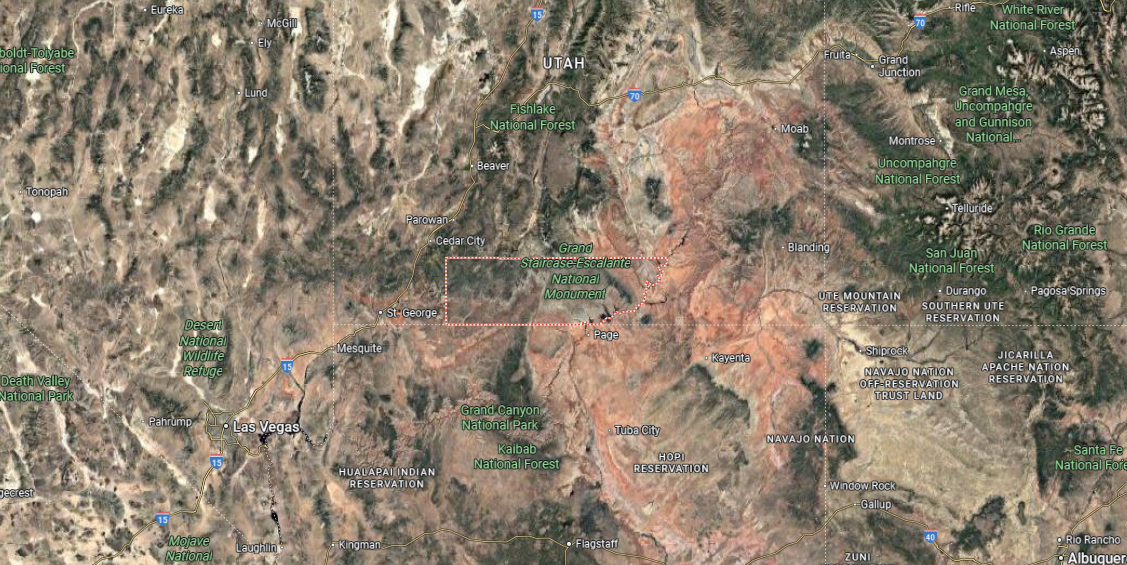
Kane County is in southern Utah, bordered by Arizona to the south and San Juan County to the east. It spans over 4,000 square miles, with landscapes ranging from the cliffs of Grand Staircase–Escalante National Monument to the waters of Lake Powell. The county seat, Kanab, is located near the Arizona border along U.S. Route 89.
Other communities include Big Water near the shores of Lake Powell and Orderville in the upper reaches of the county. Kane County sits about 200 miles south of Salt Lake City and 80 miles east of St. George. Its geography is marked by canyons, plateaus, and desert expanses, making it central to Utah’s red-rock country.
#7. Weber County, Utah
– Overall Rank: 910
– Population: 262,960
– Median household income: $82,291
– Median home value: $346,800 (74% own)
– Median rent: $1,188 (26% rent)
– Top public schools: No. Ut. Academy of Math Engineering & Science Ogden (grade A), Weber Innovation High School (grade A minus), Valley School (grade B+)
– Top private schools: Saint Joseph Catholic High School (grade A+), Oakgrove School (grade B minus), St. Joseph Catholic Elementary School (grade A+)
– Top places: Pleasant View (grade B+), North Ogden (grade B+), South Ogden (grade B)

About
#6. Wasatch County, Utah
– Overall Rank: 626
– Population: 35,009
– Median household income: $104,855
– Median home value: $620,800 (77% own)
– Median rent: $1,586 (23% rent)
– Top public schools: Old Mill School (grade A), Soldier Hollow Charter School (grade A minus), Midway School (grade A minus)
– Top private schools: Daniels Academy (grade unavailable)
– Top places: Heber (grade B+), Midway (grade B), Daniel (grade C)
You may also like: Counties in Utah with more precipitation over the past year than average

About
Wasatch County lies in the heart of Utah’s mountain country, where valleys, rivers, and high peaks create both beauty and livelihood. Early settlements thrived on farming and ranching, and those roots remain visible in the county’s rural traditions. Heber City anchors the region, balancing small-town character with growth shaped by tourism and recreation.
Fishing waters, ski resorts, and scenic trails tie residents and visitors to the land throughout the seasons. Community fairs, cultural events, and school activities sustain connections across generations. Wasatch County endures as a place where mountain landscapes and local heritage remain closely joined.
Where is Wasatch County?

Wasatch County is in north-central Utah, bordered by Utah County to the west and Duchesne County to the east. It covers about 1,200 square miles, with the Wasatch Mountains running through much of its terrain. The county seat, Heber City, is located in the Heber Valley along U.S. Route 40.
Other communities include Midway, known for its mountain setting, and Charleston near Deer Creek Reservoir. Wasatch County lies about 45 miles southeast of Salt Lake City, offering access to both rural valleys and mountain recreation. Its geography features alpine plateaus, reservoirs, and farmland that highlight its scenic character.
#5. Summit County, Utah
– Overall Rank: 481
– Population: 42,524
– Median household income: $126,392
– Median home value: $895,100 (81% own)
– Median rent: $1,822 (19% rent)
– Top public schools: Park City High School (grade A), Jeremy Ranch School (grade A), McPolin School (grade A)
– Top private schools: Park City Day School (grade unavailable), Little Miners Montessori School (grade unavailable)
– Top places: Park City (grade A), Snyderville (grade A), Summit Park (grade A minus)

About
Summit County rises high in Utah’s mountains, a region where mining history and alpine landscapes have long defined its story. Park City, once a silver mining town, has grown into a cultural and recreational center known for skiing, film, and year-round tourism. Smaller towns and rural valleys maintain ranching and farming traditions that balance the pace of resort life.
The county’s trails, ski slopes, and open spaces provide a setting where outdoor living is central to community identity. Festivals, arts, and local gatherings highlight both heritage and modern creativity. Summit County stands as a place where historic resilience and mountain vitality come together in enduring ways.
Where is Summit County?
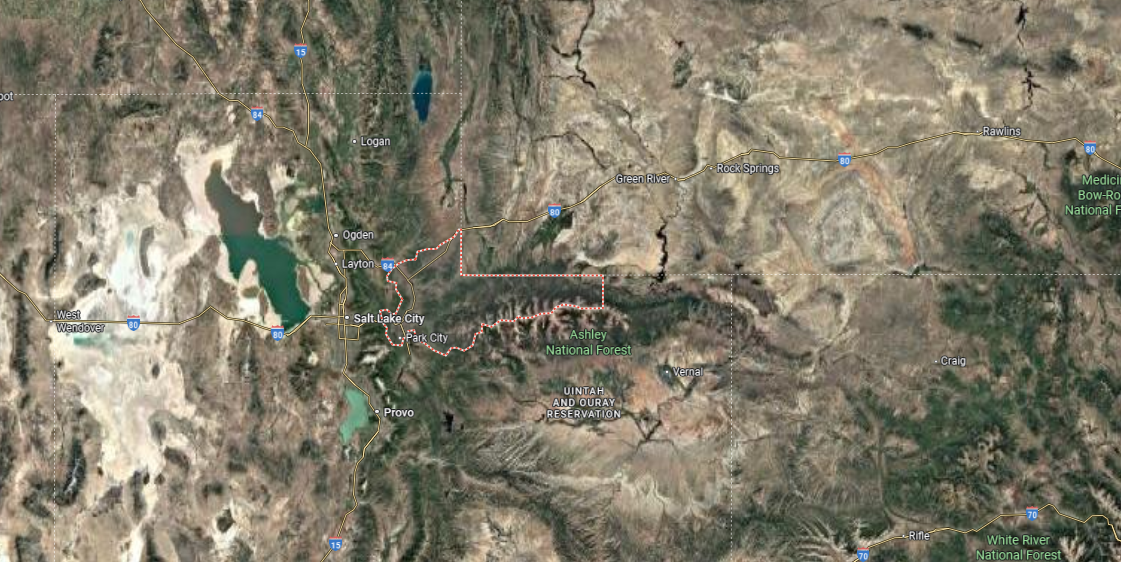
Summit County is located in northeastern Utah, sharing its eastern border with Wyoming and a northern boundary with Idaho. It spans nearly 1,900 square miles, with the Uinta Mountains dominating the eastern half and the Wasatch Range along the west. The county seat, Coalville, lies in the Weber Valley near Echo Reservoir.
Other communities include Park City, a well-known mountain resort town, and Kamas at the western base of the Uintas. Summit County is about 40 miles east of Salt Lake City, connected by Interstate 80 and U.S. Route 40. Its landscape includes alpine peaks, river valleys, and forested highlands that define both its recreation and history.
#4. Salt Lake County, Utah
– Overall Rank: 440
– Population: 1,180,643
– Median household income: $90,011
– Median home value: $440,400 (67% own)
– Median rent: $1,394 (33% rent)
– Top public schools: Itineris Early College High School (grade A+), Skyline High School (grade A), Canyon Rim Academy (grade A)
– Top private schools: Waterford School (grade A+), Rowland Hall (grade A+), Judge Memorial Catholic High School (grade A+)
– Top places: Greater Avenues (grade A+), Central City/Liberty-Wells (grade A+), East Liberty Park (grade A)

About
Salt Lake County stands at the center of Utah’s urban and cultural life, framed by the Wasatch Mountains and the Great Salt Lake. Its history stretches from pioneer settlement and the building of Salt Lake City into a modern region of commerce, education, and government. The county reflects a blend of historic institutions, diverse communities, and steady growth that continues to shape its identity.
From downtown theaters and universities to suburban neighborhoods and mountain canyons, the area offers a wide spectrum of experiences. Festivals, civic events, and outdoor recreation connect residents across varied backgrounds. Salt Lake County endures as Utah’s gathering place, where heritage, opportunity, and landscape meet.
Where is Salt Lake County?
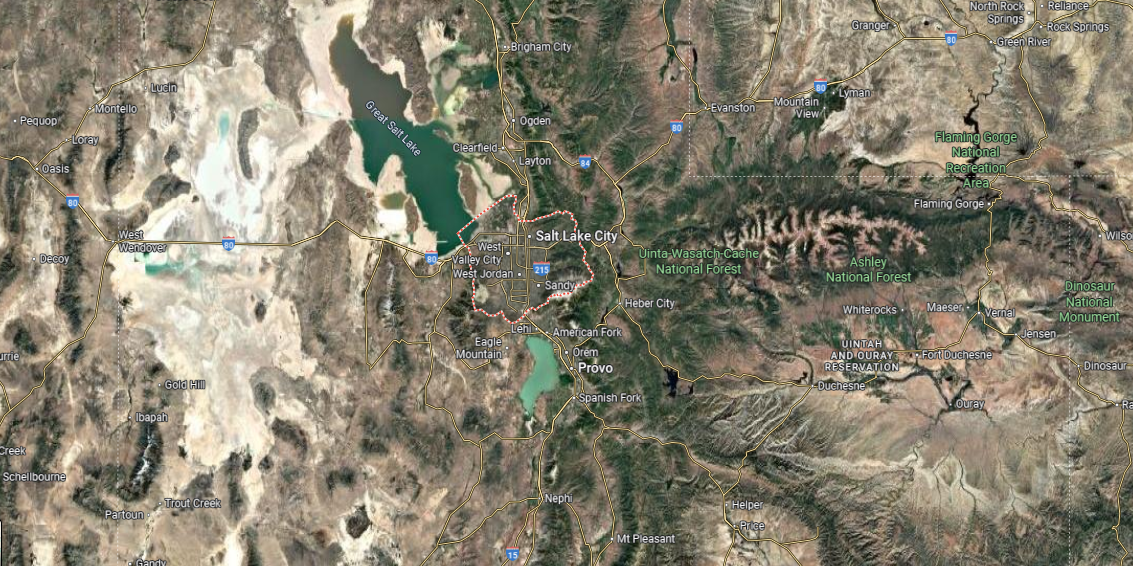
#3. Davis County, Utah
– Overall Rank: 383
– Population: 363,032
– Median household income: $101,285
– Median home value: $423,200 (78% own)
– Median rent: $1,407 (22% rent)
– Top public schools: No. Ut. Academy for Math Engineering & Science (grade A+), Davis High School (grade A), Kay’s Creek Elementary School (grade A minus)
– Top private schools: Layton Christian Academy (grade A minus), Dorius Academy (grade B minus), Saint Olaf Catholic School (grade A)
– Top places: Kaysville (grade A), Centerville (grade A), Farmington (grade A minus)

About
Davis County stretches along the Wasatch Front, a narrow strip where mountain ridges meet the shores of the Great Salt Lake. Its growth has been shaped by farming roots, military presence, and suburban development that tie it closely to the Salt Lake City region. The county’s towns and neighborhoods carry both a sense of tradition and the rhythm of modern expansion.
Wetlands, trails, and open spaces provide a natural counterbalance to busy civic and economic life. Community events, schools, and local festivals strengthen ties across generations. Davis County stands as a place where natural setting and steady growth continue to define daily living.
Where is Davis County?
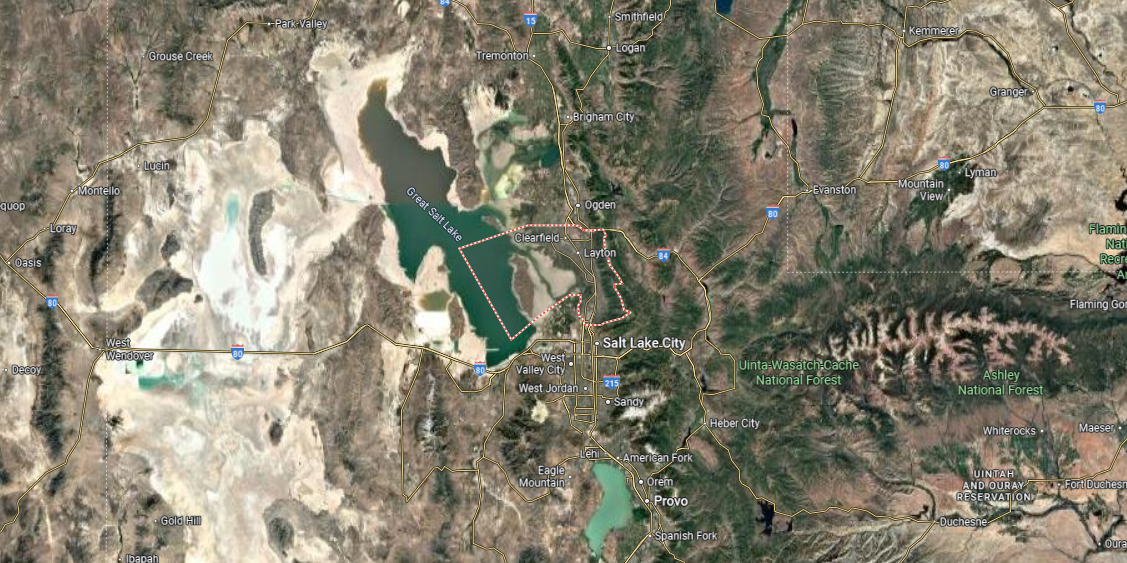
Davis County is located in northern Utah, bordered by Weber County to the north and Salt Lake County to the south. It spans just over 300 square miles, positioned between the Wasatch Mountains on the east and the Great Salt Lake to the west. The county seat, Farmington, lies along Interstate 15 near the base of the mountains.
Other major communities include Layton, Bountiful, and Kaysville, which form part of the county’s suburban corridor. Davis County is about 15 miles north of Salt Lake City, making it a central link in the Wasatch Front. Its geography features mountain foothills, valley plains, and lakefront areas that shape both its development and natural scenery.
#2. Cache County, Utah
– Overall Rank: 335
– Population: 134,428
– Median household income: $72,719
– Median home value: $351,700 (64% own)
– Median rent: $1,025 (36% rent)
– Top public schools: InTech Collegiate Academy (grade A), Bear River Charter School (grade A), Edith Bowen Laboratory School (grade A)
– Top private schools: Logan River Academy (grade unavailable), Uinta Academy (grade unavailable)
– Top places: River Heights (grade A), Hyde Park (grade A minus), Smithfield (grade A minus)

About
Cache County rests in northern Utah’s Cache Valley, a broad stretch of farmland surrounded by mountain ranges. Its roots lie in pioneer settlement, farming, and trade, which built strong community traditions that still shape local life. Logan, the county seat, serves as both an agricultural hub and the home of Utah State University, blending education with rural heritage.
Seasonal festivals, markets, and university events create a rhythm that ties residents together throughout the year. Trails, canyons, and open lands connect daily living to the surrounding landscape. Cache County remains a place where history, education, and natural setting combine to form a lasting identity.
Where is Cache County?
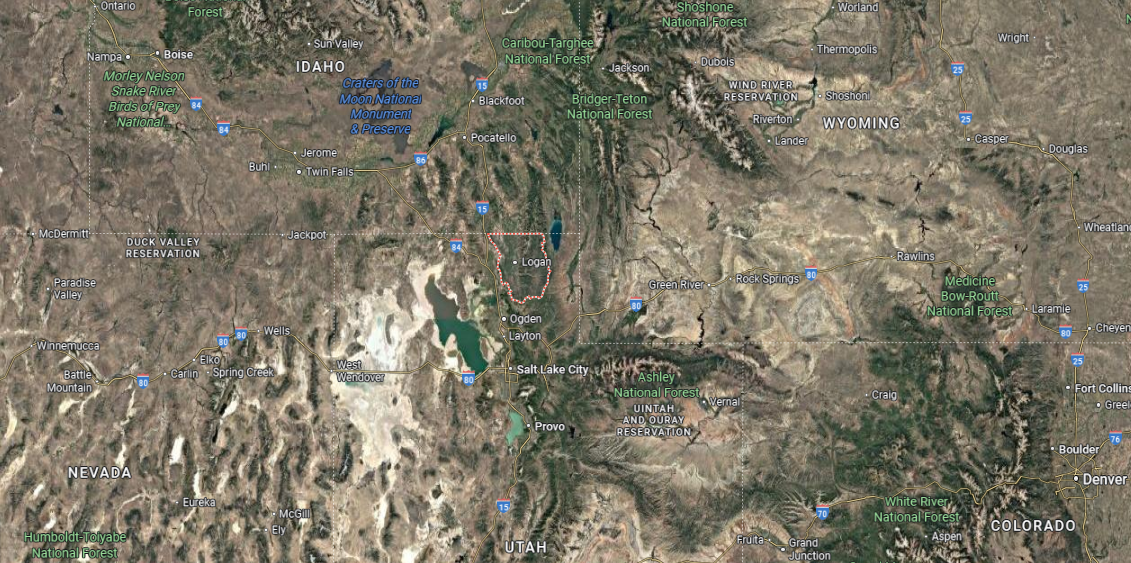
Cache County is in northern Utah, bordered by Idaho to the north and Rich County to the east. It covers about 1,170 square miles, with the Bear River Mountains running along its eastern side and fertile valleys stretching across the center. The county seat, Logan, sits near the middle of the valley and serves as home to Utah State University.
Other communities include Smithfield to the north, Hyrum to the south, and Providence just outside Logan. Cache County is about 80 miles north of Salt Lake City and connected by U.S. Route 89 and Interstate 15. Its geography blends agricultural land, mountain canyons, and river valleys, giving the area both natural and economic significance.
#1. Utah County, Utah
– Overall Rank: 327
– Population: 666,021
– Median household income: $91,263
– Median home value: $443,000 (69% own)
– Median rent: $1,330 (31% rent)
– Top public schools: Utah County Academy of Sciences (UCAS) (grade A+), Karl G. Maeser Preparatory Academy (grade A+), John Hancock Charter School (grade A)
– Top private schools: American Heritage School (grade A), Liahona Preparatory Academy (grade A minus), Meridian School (grade B)
– Top places: Highland (grade A), Cedar Hills (grade A), Lehi (grade A minus)
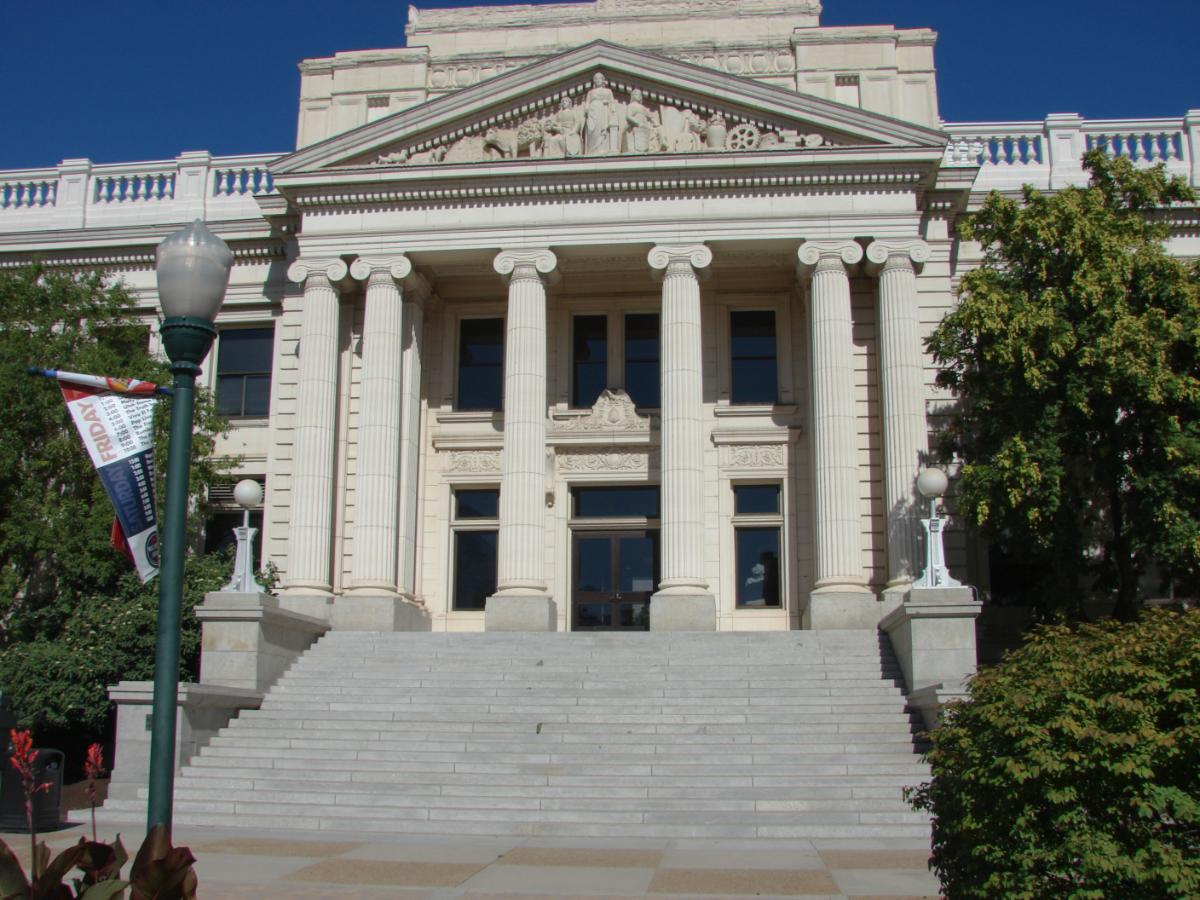
About
Utah County stretches across central Utah’s Wasatch Front, where fast-growing cities meet farmland and mountain ranges. Its history began with pioneer settlements and orchards, later transforming into a hub for education, technology, and commerce. Provo and Orem anchor the county, blending university life, innovation, and strong community traditions.
Residents enjoy access to Utah Lake, alpine canyons, and year-round outdoor recreation that tie urban living to natural landscapes. Cultural festivals, school activities, and civic gatherings highlight the county’s shared identity across diverse communities. Utah County stands as a region where heritage and rapid growth continue to shape a dynamic way of life.
Where is Utah County?
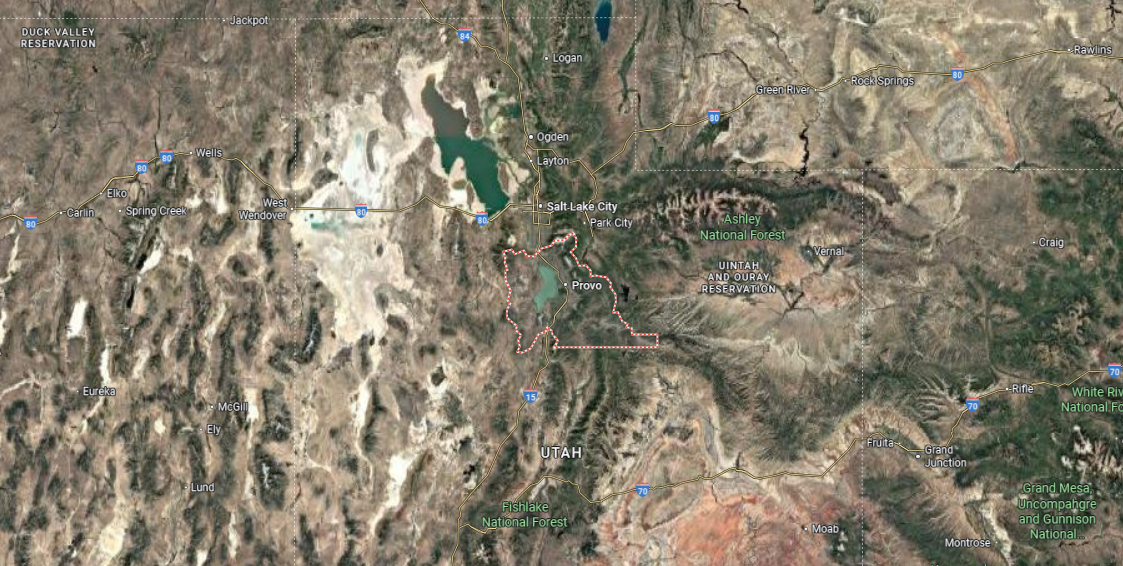
Utah County is located in north-central Utah, bordered by Salt Lake County to the north and Juab County to the south. It covers about 2,100 square miles, stretching from Utah Lake in the valley floor to the Wasatch Mountains on the east and the Utah Lake Plateau on the west. The county seat, Provo, lies along the eastern shore of Utah Lake and is home to Brigham Young University.
Other major communities include Orem to the north, Lehi at the northern edge of the county, and Spanish Fork to the south. Utah County is about 45 miles south of Salt Lake City, linked by Interstate 15 as part of the Wasatch Front. Its landscape combines growing urban centers, farmland, and mountain canyons, reflecting both rapid development and scenic surroundings.
This story features data reporting and writing by Elena Cox and is part of a series utilizing data automation across 50 states.
You may also like: Best amusement parks in Utah
By Stacker

